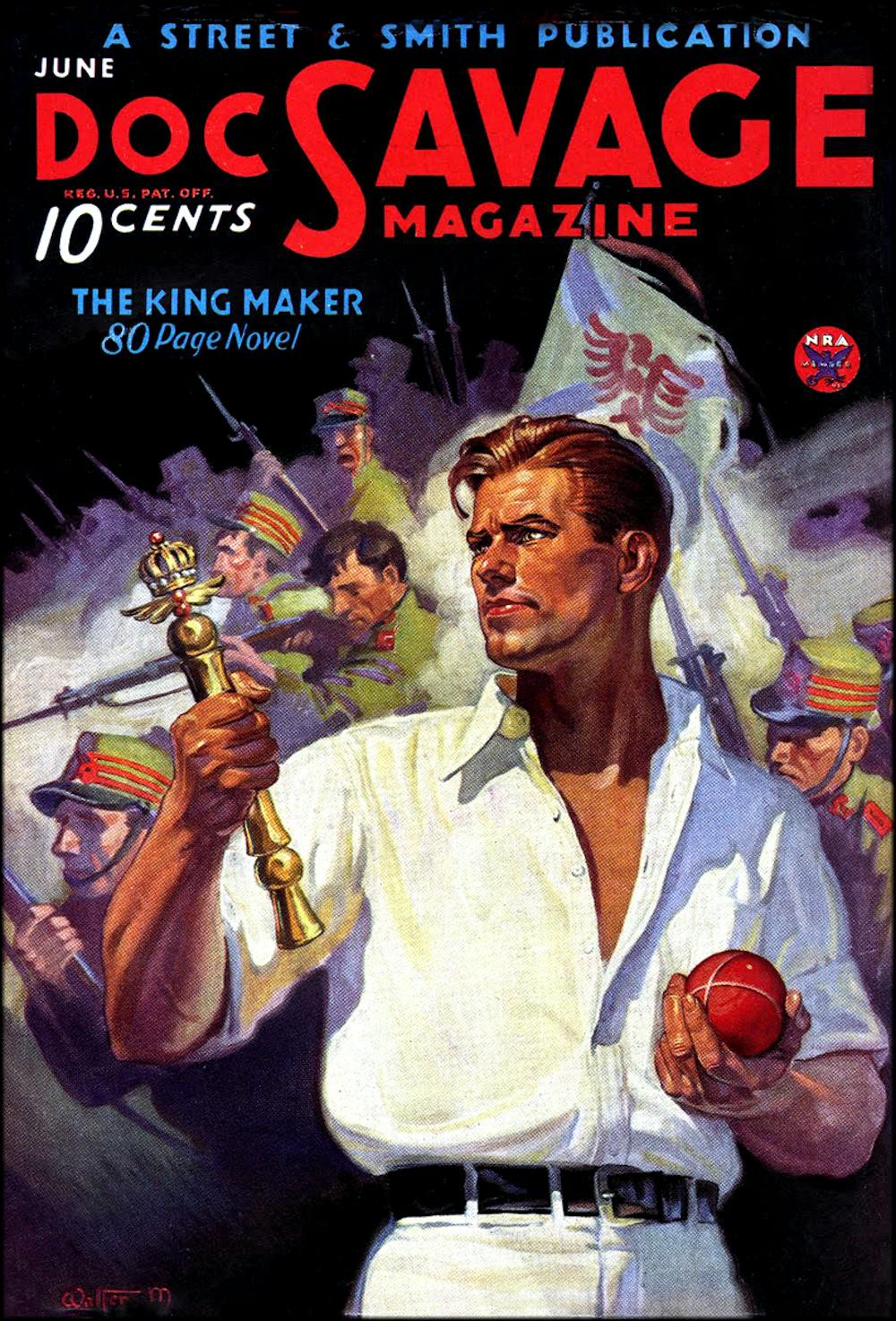Everyone knows Superman, the big blue boy scout from Krypton. Clark Kent, small town Kansas reporter is the last son of an advanced civilization who fights for justice against all manner of monsters and villains.
Some know Doc Savage, a super scientist who was an inspiration for the Man of Steel (even had his own 'Fortress of Solitude', an arctic base where he conducted experiments and meditated). A master adventurer accompanied by five war veterans, busting all manner of super crime. (Those of a certain age may recall the Bantam reprints with the James Bama covers. Or the cheesy movie with Ron Ely.)

Like many pulp authors, Dent was a machine, a man who had to churn multiple compelling plots on deadlines for a monthly, or even bi-monthly, target and a readership numbering in the millions. For any writer today, that may seem pure insanity. However, Dent gifted us with his method for writing, which laid out an easy to follow formula. Credit to website Dirty 30s who archived this. Read it here: http://www.paper-dragon.com/1939/dent.html

In the event that it goes down (because this is the internet), here are the main bullet points: Dent has four criteria when he writes a pulp story. They are the following:
1. A DIFFERENT MURDER METHOD FOR VILLAIN TO USE
2. A DIFFERENT THING FOR VILLAIN TO BE SEEKING
3. A DIFFERENT LOCALE
4. A MENACE WHICH IS TO HANG LIKE A CLOUD OVER HERO
After that, he divide up a 6000 word story (typical for a pulp novel of the time) into four 1500 word parts (you can think of them as acts, and work exactly like they do). For Act 1/First 1500, he says:
1--First line, or as near thereto as
possible, introduce the hero and swat him with a fistful of trouble.
Hint at a mystery, a menace or a
problem to be solved--something the hero has to cope with.
2--The hero pitches in to cope with his fistful of trouble. (He tries to
fathom the mystery, defeat the menace, or solve the problem.)
3--Introduce ALL the other characters as soon as possible. Bring them on in action.
4--Hero's endevours land him in an actual physical conflict near the end of the first 1500 words.
5--Near the end of first 1500 words, there is a complete surprise twist in the plot development.
Act 2/Second 1500:
1--Shovel more grief onto the hero.
2--Hero, being heroic, struggles, and his struggles lead up to:
3--Another physical conflict.
4--A surprising plot twist to end the 1500 words.
Next, Act 3:
1--Shovel the grief onto the hero.
2--Hero makes some headway, and corners the villain or somebody in:
3--A physical conflict.
4--A surprising plot twist, in which the hero preferably gets it in the neck bad, to end the 1500 words.
And finally, Act 4:
1--Shovel the difficulties more thickly upon the hero.
2--Get the hero almost buried in his troubles. (Figuratively, the
villain has him prisoner and has him framed for a murder rap; the girl
is
presumably dead, everything is lost, and the DIFFERENT murder method is
about to dispose of the suffering protagonist.)
3--The hero extricates himself using HIS OWN SKILL, training or brawn.
4--The mysteries remaining--one big one held over to this point will
help grip interest--are cleared up in course of final conflict as hero
takes
the situation in hand.
5--Final twist, a big surprise, (This can be the villain turning out to
be the unexpected person, having the "Treasure" be a dud, etc.)
6--The snapper, the punch line to end it.

Detailed, right?
Not too dissimilar to modern paradigms we use for discussing structure and writing methodology. And it makes sense - given his line of work, you couldn't wait for the divine muse, you had to get a story down. It gives you a way to think about the pace of your story and what will keep your reader hooked. It may not be as fanciful as Blake Snyder's Pope in the Pool, but it is a reminder that act and writing theory existed long before Syd Field was around.
It's also a methodology not unlike writing for continuing drama or more procedural television today, where plot can take a level of primary focus over drastic character growth. This is a way to give a decently fleshed out cast new adventures every week, because character proactivity and choice still drives, and a format viewers will grow loyal to.